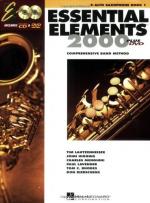|
This section contains 352 words (approx. 2 pages at 300 words per page) |
Any material that permits the flow of an electric charge is said to be a conductor. The invention of the word " conductor" has been credited to French-English physicist John Théophile Desaguliers (1683-1744), although some credit Benjamin Franklin with the word.
In an electric field, negatively charged particles flow toward the positive electrode (the anode) while positively charged particles flow toward the negative electrode ( cathode). There are three primary ways in which electric conduction occurs.
The first type of conduction is known as ionization. This occurs mainly in gases where electrons are forced away from their individual atoms. A spark that jumps between the positive and negative terminals knocks electrons from the outer orbits of the atoms. If the electric field is high enough, a chain effect is created and the ionized gas gives off light. This occurs in the Earth's atmosphere, and is responsible for producing the aurora borealis (northern lights).
The second type of conduction occurs when ionic bonded chemicals, such as salt crystals, have ions that are loosely bonded together. An electric field passing across a salt crystal causes the ions to move to either the positive or negative electrode; however, the movement is slow. If the solid crystal is heated and liquified, movement is easier and a higher electric current is attained.
The third form of conduction occurs in metals where the electrons exist as a "cloud" that can be moved easily in an electric field. The atomic nuclei of metals are surrounded by an electron cloud; that is, the electrons in the outer orbits of metals are extremely mobile and behave more like the molecules of a gas. Metal conductors can pass very large electric currents; the more mobile the electrons, the less the resistance and the better the conductivity. At room temperature silver is one of the best conductors of electricity.
Superconductors are metals that, when cooled to within a few degrees of absolute zero (-273° C), lose all electric resistance; when an electric current passes through a superconductor, it flows as long as the superconductor can be kept cold.
|
This section contains 352 words (approx. 2 pages at 300 words per page) |


